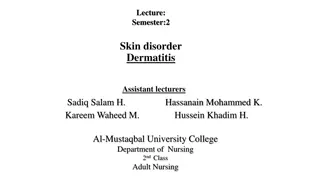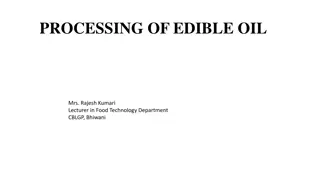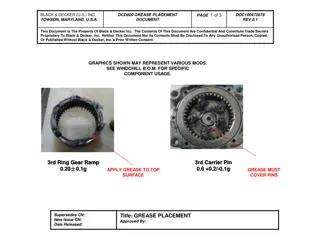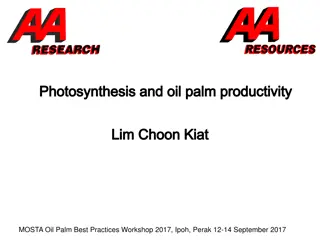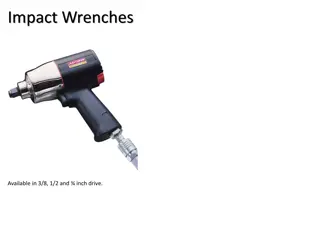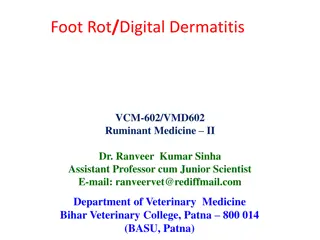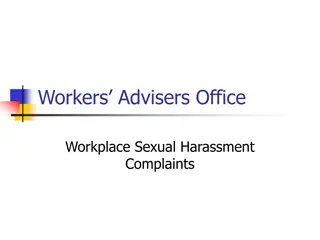Understanding Oil & Grease Dermatitis in Mechanical Workers
Occupational skin problems, such as oil and grease dermatitis, affect mechanical workers due to continuous exposure to oils, grease, solvents, and chemicals. Workplace risk assessments and good hand care practices are essential for prevention. Treatment includes identifying causes and implementing appropriate measures for hand dermatitis management.
Download Presentation

Please find below an Image/Link to download the presentation.
The content on the website is provided AS IS for your information and personal use only. It may not be sold, licensed, or shared on other websites without obtaining consent from the author. Download presentation by click this link. If you encounter any issues during the download, it is possible that the publisher has removed the file from their server.
E N D
Presentation Transcript
dermatitis Bulletin: Title: Oil & Grease Dermatitis Sensitivity: LNT Construction Internal Use
Oil & Grease Dermatitis Acneiform rashes Exposure to industrial oil, grease or cooling agents can cause oil folliculitis(inflamed hair follicles) And come dons (blackheads and whiteheads). These conditions appear on any area of the body where there is excessive oil on the skin or clothing, commonly the forearms and thighs. Sensitivity: LNT Construction Internal Use
Oil & Grease Dermatitis Why do mechanical workers have skin problems? Occupational skin problems in mechanical workers are mainly caused by: Mechanical worker working cloth continuously wearing same working clothes without washing Contact with oil, grease, solvents and degreasing agents Pre-existing sensitive skin or atopic dermatitis(eczema) Exposure to potentially toxic or allergenic chemicals Micro trauma Vibrating power-driven hand tools Cold working conditions Exposure to ultraviolet radiation. Sensitivity: LNT Construction Internal Use
Oil & Grease Dermatitis Workplace risk assessment Workplace risk assessments identify hazards (anything that has the potential to cause harm) and risk (the likelihood of an event occurring). The aim should be to reduce these, as sickness absence from work can be prolonged and costly. Ill health can adversely affect the quality of life; the ability to work in a chosen industry; insurance costs and litigation claims. A generic risk assessment in any Mechanical repair establishment should include a specific section on skin exposure and should cover: Hazardous properties and adverse health effects from the exposure to chemicals Hazardous properties of vibrating tools Frequency and duration of exposure Controls and their effectiveness Personal protective equipment Sensitivity: LNT Construction Internal Use
Oil & Grease Dermatitis Good hand care advice for mechanical repair workers Use personal protective equipment according to manufacturers' instructions. Remove skin contaminants by washing with clean warm water before eating, drinking, smoking or using the lavatory. Use the mildest cleanser required to get the job done. Never clean hands with concentrated cleaning products, solvents or fuel. Barrier creams used before work may be appropriate in some circumstances, to make skin cleansing easier. Use moisturising creams after work and after washing hands. Regularly change soiled overalls. Never keep oily rags in pockets. Report skin problems to management. Sensitivity: LNT Construction Internal Use
Oil & Grease Dermatitis Treatment of occupational skin disease Management of hand dermatitis in a TBM Mechanical worker may include the following: Taking a full history of the work undertaken to identify possible causes of the dermatitis Minimising contact with irritants (eg, solvents, dust, water) Avoiding known allergens Optimising skin barrier function with suitable emollients, barrier and moisturising creams applied frequently during work and at home Applying potent topical corticosteroids to dermatitis flare-ups Prescribing antibiotics for secondary bacterial infection. Sensitivity: LNT Construction Internal Use
End Sensitivity: LNT Construction Internal Use



